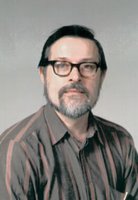Professor
Time-scale of planetary evolution: plate tectonics; polar wander; magnetic field reversals; thermal history; glacial history; atmospheric history; meteorite craters; biological evolution; human evolution; development of laser-probe 40Ar/39Ar dating method.
Brief CV
B.A., Oxford (1957); D. Phil., Oxford (1960). Fellow, Royal Society Canada (1985); Past President's Medal Geological Association Canada (1985); Bancroft Award Royal Society Canada (1986); Science Writer for Globe and Mail (1980-92); ; Sandford Fleming Medal, Royal Canadian Institute (1996); Fellow, American Geophysical Union (1995); Fellow, Geochemical Society and European Association for Geochemistry (1997); Chair (1992 - 1997); J. Tuzo Wilson Professor of Geophysics (1995-2000).
Reseach Interests
A nuclear reactor, a high-powered laser and a mass spectrometer are the tools used by Prof. York's research group to extract information from tiny pieces of rocks and minerals. The 40Ar-39Ar technique, based on the radioactive decay of 40K to 40Ar, is one of the major tools for unraveling the history of the Earth and Solar System. It has been used to date the extinction of the dinosaurs, the formation of Moon rocks and meteorites, and the evolution of our human ancestors. The Toronto lab has pioneered in this method for almost 30 years, and remains at the forefront, as shown by its recent publications, two of them selected by Time and Discover magazines as among the top science stories of the year.
The group specializes in developing new apparatus and analytical methods, as well as new techniques of interpreting data, using both mathematical analysis and numerical modeling. The emphasis throughout is on fundamental physical understanding of the processes operating both in the laboratory and in nature.
Recent areas of research in Toronto include the development of techniques for dating much younger samples than were previously possible to date with the methods, so that it now covers an age range from 5,000 years (about the age of the pyramids) to 4,500,000,000 years (the age of the Earth). The same developments allow analysis of very difficult materials, like those used to date the oldest known tools, made 2.3 million years ago. Other recent research has dealt with meteorite impacts and their possible influence on catastrophic extinctions, dating newly discovered fossils from China which display the transition from dinosaurs to birds, and deciphering complex geologic histories from sand-grain-sized bits of volcanic ash and sedimentary rock.
Publications
"The Earliest History of the Earth". D. York, Scientific American, 268, No 1, 90-96 (1993).
"Dates and Rates in Ancient Lakes: 40Ar-39Ar Evidence for an early Cretaceous Age for the Jehol Group, Northeast China". P.E. Smith, N.M. Evensen, D. York, F. Jin, J. Li, S. Cumbaa and D.A. Russell, Can. J. Earth Sci., 32, 1426-1431 (1995).
"Late Pliocene Homo and Oldowan Tools from the Hadar Formation (Kada Hadar Member), Ethiopia". W.H. Kimbel, ....., D. York, Y. Chen, N.M.Evensen, and P.E. Smith, Journal of Human Evolution, 31, 549-561 (1996).
The Age of the Popigai Impact Event and its Relation to Events at the Eocene/Oligocene Boundary". R. Bottomley, R. Grieve, D. York, and V. Masaitas, Nature, 388, 365-368 (1997).
"Single-grain Argon-argon ages of Glauconies: Implications for the Geological Time-scale and Global Sea-level Variations". P.E. Smith, N.M. Evensen, D. York and G.S. Odin, Science, 279, 1517-1519 (1998).
"A World in a Grain of Sand: Regional Metamorphic History from Argon-argon Laser Probe Analyses of Proterozoic Sediments from the Canadian Shield". Q. Hu, N.M. Evensen, P.E. Smith and D. York, Precambrian Res., 91, 287-294 (1998).
"Under the volcano: A new dimension in 40Ar/39Ar dating of volcanic ash". P.E. Smith, N.M. Evensen and D. York, Geophysical Research Journal, 27, 585-588 (2000).
"Single-Crystal 40Ar-39Ar Dating of Pyrite: No Fool's Clock". P.E. Smith, N.M. Evensen, D. York, P. Szatmari and D.C. Oliveira, Geology, 29, 403-406 (2001).
In Search of Lost Time, Derek York; Inst. of Physics Publishing, Bristol, (1997).
Em Busca Do Tempo Perdido, Derek York; Replicacao, Lisbon, (1999).

